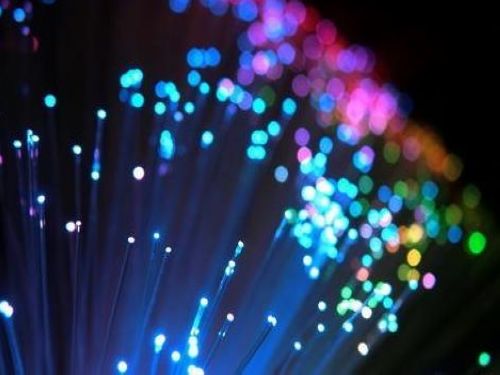European and Japanese research and development of new optical fiber speed increased 5,000 times
 The European Union and Japan announced six new-generation network research projects. Among them, there is a possibility that the next generation of backbone networks will take shape. One of the projects, STRAUSS, will have fiber transmission speeds of up to 100 Gbps, about 5,000 times the average broadband speed in Europe today, which is 19.7 Mbps.
The European Union and Japan announced six new-generation network research projects. Among them, there is a possibility that the next generation of backbone networks will take shape. One of the projects, STRAUSS, will have fiber transmission speeds of up to 100 Gbps, about 5,000 times the average broadband speed in Europe today, which is 19.7 Mbps. The above projects will receive approximately 18 million euros in funds, involving network security, network capacity, network storage, high-density data traffic, and energy efficiency. This network transformation will use new fiber-optic packet switching technology and optical transceiver modules, as well as upgraded hardware for control software. The next step will be a large-scale test on the European and Japanese websites.
The person in charge of the STRAUSS program said that in the next decade, we are in an era of information explosion and we urgently need new and efficient networks to handle the ever-increasing amount of information. According to statistics, there are now 1,700 trillion bytes of data generated every minute on Earth, and data traffic will double between early 2012 and early 2013. By 2018, it will increase 12 times. Such a huge amount of data can only be carried when the network speed is faster.
Neelie Kroes, vice president of the European Commission, said: “The network in the future should be unimpeded, but for the existing obstacles, we are not ready to set off a data revolution. More than 100 Gbps of optical fiber already exists in the laboratory. The project will allow ordinary households to use 100Gbps optical fiber."
The following are the six major research projects that have been funded by the European Union:
STRAUSS: Focus on developing fiber optic networks that can reach 100Gbps.
MiWEBA: Optimize the processing capabilities of existing radio frequencies and increase the connection speed of mobile devices.
NECOMA: Focus on the security of personal data in the area of ​​confidentiality, such as medical history records, threats and potential impacts of cyber attacks.
GreenICN: Efficient use of information network energy. When the energy resources are scarce, the network stability of the post-disaster situation (earthquake, hurricane, etc.) is tested, and then the network performance will be crucial.
ClouT: Use real-time control sensors to control smart city information, such as energy usage, traffic flow, or emergencies. To achieve this goal, the project will integrate cloud computing and Internet of Things functionality.
FELIX: Establishing an EU-Japan joint experimental platform will help universities and research centers experiment with new network technologies. This new platform will increase researchers' use of experimental facilities.
Oval Series Sensor Automatic Dustbin
Auto Trash Can,Oval Series Sensor Automatic Dustbi,Oval Series Sensor Dustbin,Oval Series Sensor Office Dustbin
NINGBO ZIXING ELECTRONIC CO.,LTD. , https://www.zixingautobin.com